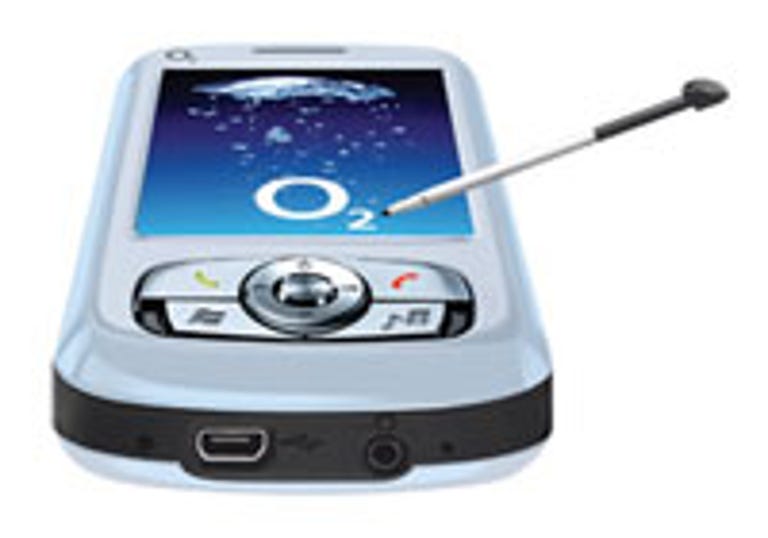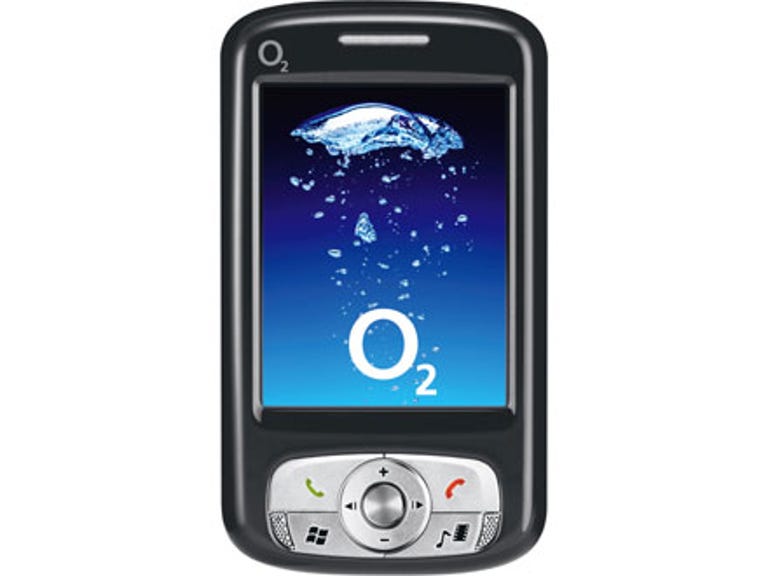 Why You Can Trust CNET
Why You Can Trust CNET O2 Xda Atom review: O2 Xda Atom
It has Wi-Fi, a 2-megapixel camera and runs on Windows Mobile 5.0, yet shares the same dimensions as the Xda II Mini. Find out what the hype on the Xda Atom is all about.
O2's Xda II Mini has been one of the most popular phones here at CNET.com.au, so we were especially keen to get our hands on its successor, the O2 Xda Atom. At first, visually speaking, it's hard to obviously tell the two apart, save for the obvious switch from a silver style scheme to an all-black one. The Atom is marginally smaller than the Xda II Mini at 102 x 58 x 18.5mm versus the Mini's 108 x 58 x 18.1mm, but that's more of a paper measurement -- we'd challenge anyone picking up both phones to intuitively feel the size difference without putting them side to side.
Physical features are pretty much as per O2's standard take on smartphones, which means that you've got a small five way selector at the base of the phone, surrounded by call accept and decline buttons and dedicated buttons for the program Start function and the integrated O2 Media Plus application. The small stylus slots neatly into the top right of the phone, which also houses a MiniSD memory card slot and the phone's power button. The rear of the phone houses the Atom's 2-megapixel CMOS camera, as well as a strobe flash. The Atom's display is a 2.7" TFT LCD touchscreen with a top resolution of 240 x 320 pixels.
The Good
The Bad
The Bottom Line
Features
If you can't connect to something with the Xda Atom, you're really not trying. For a start, it's a tri-band GSM/GPRS/EDGE (GSM900/1800/1900) phone. Moving beyond simple mobile telephony, it's also Bluetooth capable and Wi-Fi capable, albeit only to 802.11b speeds. For the true relics amongst us, it's even IrDA compatible, although we're not sure anyone's using infrared to send anything via mobile in this day and age. There's an obvious battery hit to take into consideration for each and every one of these technology inclusions, they're still good to have as individual connection options.

On the PDA side, the Atom runs on the Microsoft Windows Mobile 5.0 platform, which offers the usual suite of office compatibility tied into a PC running the ActiveSync application. Beyond spreadsheets and documents, the Atom also ships with O2's MediaPlus application, which gives an integrated approach to viewing multimedia content with a very distinct Windows Media Center-type feel; it'll play back music and video, display pictures and run the phone's inbuilt FM radio application from a simple tappable interface.
Performance
O2 warned us that the unit they were sending us for evaluation was a pre-production sample -- and we could hardly miss the splash screen that warned us of this fact every time we powered the phone up. This puts us in a tricky position to accurately gauge the Atom's true performance, as it's hard to say that any particular issue might not be solved via a future ROM upgrade. Still, many of our observations of the Atom's performance had less to do with issues that might be resolved with ROM changes, and more to do with the phone itself.
As with the Xda Mini, the biggest hit against the Atom is also the unit's biggest area of appeal, in that it's a very small smartphone, and you won't feel like you're holding a brick up against your ear every time you make a call. The downside of miniturisation in this case is that everything else -- interfaces, screen sizes and virtual keyboards -- is smaller too, making it a more challenging PDA than its fuller-sized cousins. It's less of an issue for jotting small notes, but if you need to send a long e-mailed response to a business query in a hurry, you may find yourself struggling.
The MediaPlus application is a smooth bit of software design -- or, if you're the conspiracy theory type, a neat bit of interface thievery -- but you'll either have to load files in via ActiveSync or via MiniSD card. The MiniSD card inclusion is a touch disappointing, as there's plenty of SD users out there, but many fewer with MiniSD cards outside of the mobile world.
O2 rates the Xda Atom as having a battery life of 150 hours standby and 5.5 hours talktime, although that's almost certainly a figure achieved with Bluetooth silenced and Wi-Fi switched off. In our testing we found the battery lasted around four days of moderate usage, although how much that was affected by the pre-production ROM in our test unit is impossible to say -- we did experience a few crashes in that time that could have preserved or even drained additional power.
The Xda II Mini was certainly a hit amongst CNET.com.au's audience as it dominated the early months of the year when it came to choosing our top mobiles, and given that the Atom is essentially just a feature set upgrade and a coat of black paint on the same basic design, we see no reason why the Atom won't fare as well. If you're after a small smartphone, the Atom is a solid, albeit not exactly inexpensive choice.


